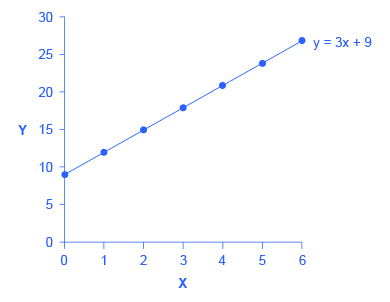It’s important to know the terminology of graphs in order to understand and manipulate them. Let’s begin with a visual representation of the terms (shown in Figure 1), and then we can discuss each one in greater detail.

Throughout this course we will refer to the horizontal line on the graph as the x-axis. We will refer to the vertical line on the graph as the y-axis. This is the standard convention for graphs.
An intercept is where a line on a graph crosses (“intercepts”) the x-axis or the y-axis. You can see the x-intercepts and y-intercepts on the graph above. The point where two lines on a graph cross is called the interception point.
The other important term to know is slope. The slope tells us how steep a line on a graph is. Technically, slope is the change in the vertical axis divided by the change in the horizontal axis. The formula for calculating the slope is often referred to as the “rise over the run”—again, the change in the distance on the y-axis (rise) divided by the change in the x-axis (run).


